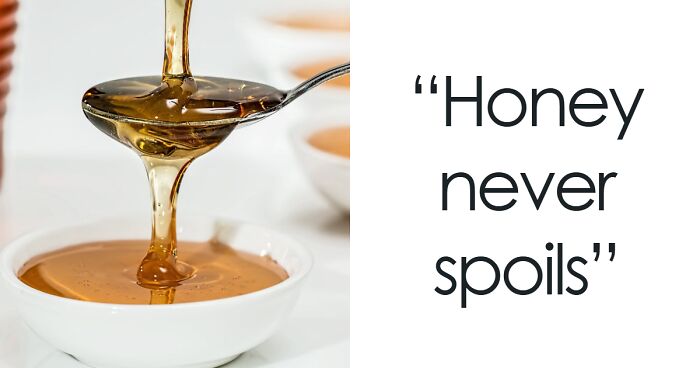
Wet vs. Dry Dog Food: Which is Best Choice for Dogs Nutrition
Choosing the right food for your dog can feel a bit overwhelming. Because it is the first step you are taking toward your dog’s well-being. Should you go with dry kibble or flavorful wet food? Each type of dog food has its advantages, so the “best” option really depends on your dog’s individual needs like their breed, health, activity level, and even their picky taste preferences!
- Dry food offers convenience, dental benefits, and is more affordable, but may lack appeal for picky eaters.
- Wet food provides superior hydration and flavor but has a shorter shelf life and higher cost per calorie.
- The best diet might combine both wet and dry food, catering to a dog's health needs, preferences, and lifestyle.
Both wet and dry food are healthy for your dog, but they have some key differences. Wet food has more moisture which can be great for dogs who don’t drink enough water, it can also be easier to chew, which is important for older dogs or dogs with dental diseases or problems. However, a dry diet keeps fur clean and helps prevent skin diseases around the mouth and can be a more affordable option.
Let’s explore the pros and cons of wet versus dry dog food to help you determine the perfect diet for your beloved companion.
The information provided herein is for informational purposes only. Please refer to our disclaimer for more details..
Dry Food for Dogs
The world of pet nutrition wouldn’t be the same without dry dog foods. In 1860, James Spratt changed the game – creating a biscuit-like food that was the ancestor of modern dog treats. But the true revolution came in the 1950s, when there were advances in extrusion technology that allowed pet food companies to create the first extruded dry pet foods and dog owners suddenly had a whole new world of convenient, balanced nutrition for their dogs.
How Dry Food is Made?
Dry dog food – in the USA known as kibbles and in the UK called biscuits – starts with a carefully crafted mixture. Meats, grains, and vital nutrients are ground together for optimal nutrition then this mixture is cooked at high temperatures. And, this process removes moisture & shapes the mixture into kernels. Imagine it like baking but with a focus on creating a denser, drier product ideal for storage.
For the classic kibble shape, the mixture goes through an extruder. That specialized machine pushes it through molds, and the kibbles are then dried. But it doesn’t end there! Fats, oils, vitamins, and minerals get sprayed on for a nutritional boost.
Some modern dry food brands also add live probiotics to enhance the digestive system & immune health. In the end, the kibble is rapidly packaged to lock in freshness. This results in dry food with only 3-12% water content. That offers a convenient, less messy food that stores for longer period of time and makes it a practical choice for many pet owners.
Pros
When choosing the best food for your furry companion, don’t overlook the powerful benefits dry food offers. It’s packed with advantages for your dog’s health that make your life as a pet owner so much easier.
Here are the benefits of dry foods for dogs:
- Kibble is the king of convenience because it has a long shelf life. This means you can stock up and save yourself from those frequent store runs. Plus, an open bag stays fresh without the need for refrigeration. We can fill up automatic feeders and bulk containers with kibble – perfect for those hectic days!
- Dry food promotes strong teeth and gums by naturally scraping away plaque, through the act of chewing – reducing the risk of gum disease. In fact, studies show that dogs that are fed dry food enjoy fresher breath & healthier mouths compared to those on a wet food diet. And some kibbles even offer specialized dental cleaning action!
- Dry food won’t break the bank. It’s generally more affordable per serving than wet food. And if we buy in bulk it can maximize our savings. Despite the lower price point, kibble delivers excellent nutritional value for your dog.
- It offers precise portion control and aids in maintaining a healthy weight for your pup. It has lower fat content compared to wet food options. Measured servings guarantee that your dog receives the exact number of calories it needs.
- Dog Dry food helps keep long-haired clean around their mouths, which minimizes the chance of skin issues. Some high-quality kibbles contain probiotics that support digestion and a strong immune system.
- Dry food works best in combination with puzzle toys and slow feeders. By providing mental stimulation and preventing your pup from gulping down their food too quickly.
Cons
Dry dog food undoubtedly offers convenience and balanced nutrition. However, there are potential drawbacks to be aware of, here are some key considerations:
- The aroma and texture of kibbles may not be exciting compared to wet food. And this could be a significant factor for picky eaters.
- Many dry foods utilize preservatives for longer shelf life. However, some pet owners may prefer fresher, less processed options.
- Dry food doesn’t add to your dog’s water intake. So if your pet doesn’t drink enough, is prone to dehydration, or has health concerns – this could be an issue.
- While kibble can help clean teeth, its hard texture can be challenging for dogs with dental sensitivities.
- Bulk buying can be economical, but you may need to sacrifice flavor variety to do so.
Wet Dog Food
Before the popularization of extruded kibble in the 1950s, canned wet pet food was the primary choice for dog and cat owners. Introduced in 1922, “Ken-L-Ration” was the first canned dog food, made primarily from horse meat. And it wasn’t until 1930 that canned cat food entered the market. Despite the shift towards dry kibble, wet food remains a significant part of many pets’ diets – valued for its variety & palatability. And, wet food offers a moisture-rich alternative to dry food, catering to pets’ hydration needs alongside their nutritional requirements.
What Is the Processing Method for Wet Dog Food?
The process starts with grinding up protein sources. Then, a mix of vitamins, minerals, and grains is added to form a nutritious gravy. That entire mixture is then cooked and sterilized. And, this results in a much higher moisture content than dry food. Wet food typically features chunks of meat in gravy or jelly. It’s known for its strong aroma and, given its high moisture content, should be consumed quickly once opened. This process creates a nutrient-rich meal that helps with hydration. That generally offers lower carbohydrates with higher fat and protein compared to kibble.
Benefits of Wet Dog Food
If you’re looking for a way to boost your dog’s health and happiness, wet food could be the answer. Here’s why:
- Hydration Boost: Most Canned foods contain around 78% moisture, with some reaching a whopping 87.5%. This makes them ideal for dogs who don’t drink enough. And they can even support pups with kidney or urinary issues.
- Flavor Explosion: Wet food is like a gourmet feast for your dog’s senses! Its rich aromas & textures are irresistible to picky eaters and can ensure ill or elderly dogs get the nutrition they need.
- Easy to Enjoy: Soft and chewy textures make wet food perfect for dogs with dental issues or sensitive stomachs. Plus, prebiotic and probiotic options can further aid their digestion.
- Packed with Protein, Low in Carbs: Many wet foods are protein powerhouses, great for active dogs. And they’re naturally lower in carbs – benefiting your pup’s overall health. Plus, specialized formulas cater to dogs with carbohydrate sensitivities.
- Satisfying and Supports Weight Management: Wet food’s high moisture content promotes a feeling of fullness, helping curb overeating.
- Variety is Key: Wet food’s textures and flavors make it easy to introduce pups to different food types, ensuring they adapt well to changes.
- Making Mealtimes Matter: Wet food is usually perfect for mixing in meds or supplements. And for dogs with dental issues, it means a pain-free eating experience. Plus, it’s a chance to really connect with your furry friend during mealtime.
Cons of Wet Food
While wet dog food offers many benefits, there are some downsides to weigh in your decision-making. Here’s what you should know:
- Mess and Smell: Wet food may leave a bigger mess than dry food. It might leave residue in your dog’s bowl and cling to its fur. And its stronger smell might appeal to your dog, but it can be less pleasant for you.
- Shelf Life and Storage: Wet food spoils faster after opening. You’ll need to use it quickly or refrigerate it & it takes up more storage space than dry food.
- Portion Control Challenges: Wet food often comes in fixed-size cans or pouches. That can make it trickier to adjust portions for dogs with specific dietary needs.
- Cost: Wet food tends to be more expensive per calorie than dry food. This can add up, especially if you have a large dog or multiple pets.
- Dietary Considerations: Wet food is great for picky eaters, but it can also lead to overeating. This is a particular concern for dogs prone to weight gain.
So What To Give Your Dog? Wet and Dry Dog Food or a Combo of Both?
Choosing the ideal dog food – wet or dry dog food, or a combination of both– involves a balance of your preferences, your dog’s specific needs, and your lifestyle. Dry food often wins out for its convenience, affordability & potential benefits for dental health. And, on the other hand, dog wet food can provide superior hydration, increased palatability & generally lower carbohydrates.
- Cost is a major factor. Research indicates a majority of pet owners about 76% rely on dry food, and 35% mix wet and dry dog food.
- A combined diet could be the best solution, providing variety and balanced nutrition. That might mean dry food during the day and a wet food dinner or a combined bowl of dry and wet food.
- Exposing your dog to different foods early on is a wise decision because a dog’s preferences may change with age.
- Transition to a new food gradually (5-10 days) to prevent digestive issues.
- If wet food is your primary choice then include hard treats for dental health.
- Ultimately, the most important factor is a balanced, enjoyable diet that fulfills your dog’s nutritional needs, regardless of the form it takes.
Conclusion
So what’s best? Wet or dry food – the choice ultimately depends on your dog’s individual needs. Dry food offers convenience and dental benefits. While wet food excels in hydration and tasty appeal. And, perhaps the perfect solution lies in a combination of both, ensuring that your pup gets the best of both worlds. As a caring pet owner, it’s your job to observe your dog’s preferences & adjust their diet according to it. After all, a happy dog is a healthy dog!
And remember, choosing the ideal food is a huge part of providing a long and joyful life for your furry friend. For breed-specific advice consult your veterinarian as every dog has different nutritional requirements.
201views
Share on Facebook
 Dark Mode
Dark Mode 

 No fees, cancel anytime
No fees, cancel anytime 


 Image credits:
Image credits:  Image credits:
Image credits:  Image credits:
Image credits: 
























-3
0